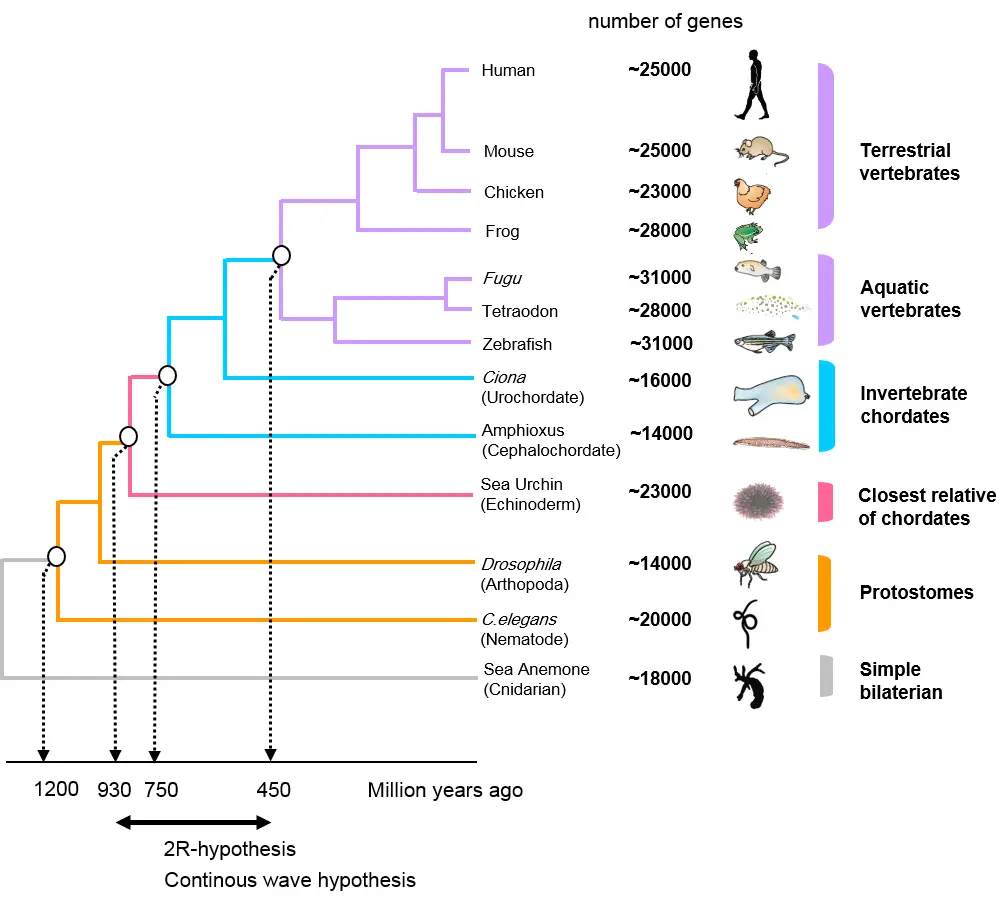Piecemeal Theory
The piecemeal duplication hypothesis proposes that the currently available genome data from diverse set of vertebrate invertebrate species does not provide compelling evidence for whole genome duplication events in early vertebrate history. Instead, the genome of modern vertebrates (including humans) is shaped by small scale duplication events involving independent gene duplication, segmental duplication and translocation events that are scattered over the history of animal evolution (Abbasi 2008; Abbasi and Grzeschik 2007; Hughes et al., 2001)(Figure 1).

Figure 1: A phylogeny of animals. Evolutionary relationship, numbers of genes and divergence times of selected animals are shown. The double headed arrow underneath the phylogeny shows the proposed time windows of genome amplification events. Features not drawn to scale.
Useful references: